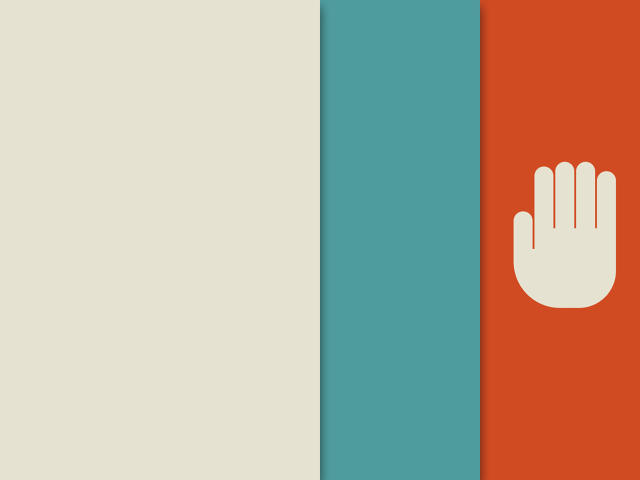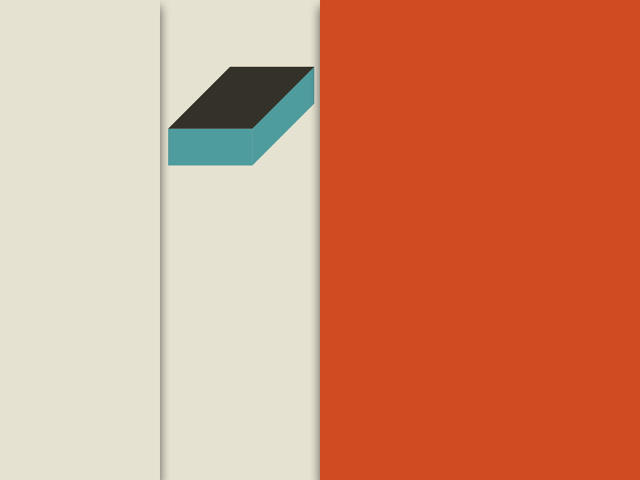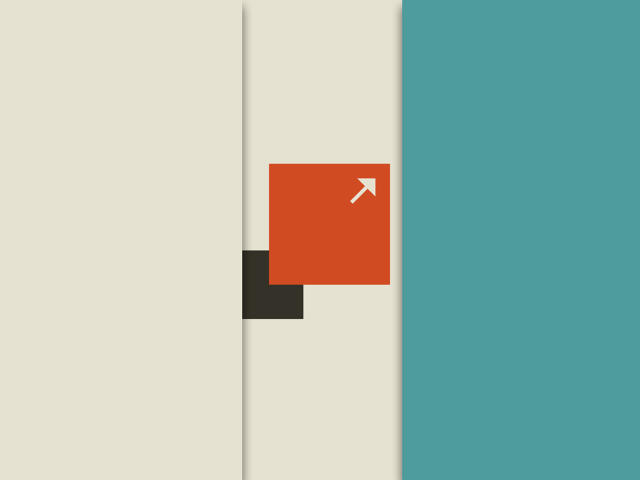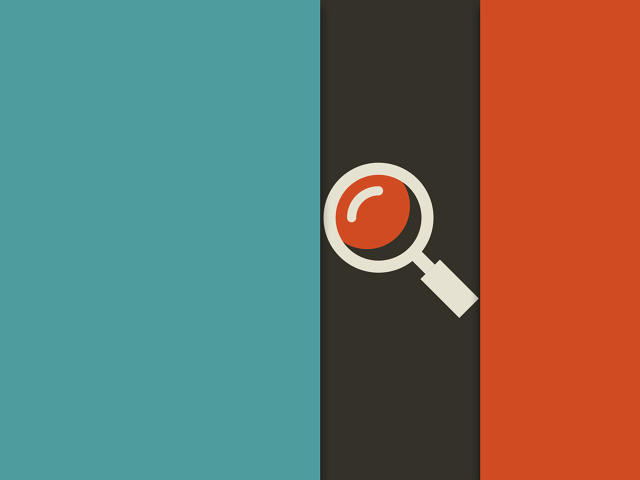5 Design Jobs That Won’t Exist In The Future
Organ designers, chief drone experience designers, cybernetic director. Those are some of the fanciful new roles that could be created by the global design industry in the next few years.
But what about current design roles? How will they favor over the next 15 years? Will every company by 2030 have a chief design officer, or will they all go extinct? Should a generation of creatives who grew up worshipping Apple’s Jonathan Ive put all their eggs in the industrial design basket?
We talked to a dozen design leaders and thinkers from companies such as Frog, Artefact, and Ideo to find out which design jobs could die out in the next 15 years, and which could grow. There’s no empirical evidence behind these picks, so they shouldn’t be taken too seriously. Still, they represent the informed opinions of people who get paid to think about the future.

Design Jobs That Will Die
UX Designers
User experience designers are among the most in-demand designers working today. So how could their jobs disappear? According to Teague designers Clint Rule, Eric Lawrence, Matt McElvogue, “UX design” has become too broad and muddled. “The design community has played fast and loose with the title ‘UX designer,'” they write in an email. “From job posting to job posting and year to year, it jumps between disparate responsibilities, tools, and disciplines. Presently it seems to have settled on the title representing democratized design skills that produce friendly GUIs.” In the future, they predict that UX design will divide into more specialized fields. “The expanding domain of user experience and its myriad disciplines will push the title ‘UX designer’ to a breaking point, unbundling its responsibilities to the appropriate specialists,” they say.
Visual Designers
Visual designers are the ones responsible for the way an app looks. UX designers, meanwhile, are the ones who concentrate on how it feels. A lot of times, designers do both, but going forward, jobs that require just visual design skills are going to die out. That’s according to Charles Fulford, Executive Creative Director of Elephant, the San Francisco-based, Apple-centric stealth arm of the digital agency Huge. “Gone are the days of UX dumping a ton of wireframes on visual designers,” he says, as well as “the days of visual designers being clueless about usability.” What are needed instead are designers who can not only come up with the look of an idea, but make it real, with actual programming and prototyping skills.
Rob Girling, cofounder of the design consultancy Artefact, agrees. “In the next 10 years, all visual design jobs will start to be augmented by algorithmic visual approaches,” he says. After all, design companies are increasingly turning to artificial intelligence to create previously impossible algorithmic designs, as well as crunch UX data on millions of users. “An AI-powered tool can automatically provide a designer with 100 variations of a layout, based on some high-level template, or style definition . . . We see early versions of these algorithmic procedurally generated tools already in use by game designers.” For example, the 17 billion planet universe in the recent blockbuster video game No Man’s Sky was largely generated algorithmically.
The short version? If you’re a visual designer, it’s time to diversify.
Design Researchers
“When ethnographic research was new in design, there were designers who specialized in research,” explains Harry West, CEO of Frog. “The role of design researcher is now evolving to become a fundamental skill and practice for all types of designers. Today, for any design challenge, it is assumed that you first learn what the customer wants; every designer must know how to set up customer research and learn from the source.” Consequently, no one needs a dedicated design researcher anymore. “The role is so fundamental that every designer should know how to do it,” says West.
John Rousseau, executive director at Artefact, puts a finer point on it: New technologies like machine learning and virtual reality are killing design research. “Design research as we know it may cease to exist—at least in terms of the types of ethnographic field work we do today,” he says. “Research—-and researchers—-will likely be marginalized by new forms of automated data and insight generation, compiled via remote sensing and delivered through technologies like virtual reality.”

Traditional Industrial Designers
Most designers we asked predictably thought their own fields had rosy prospects. Not Markus Wierzoch, industrial design director at Artefact. He says that classically trained industrial designers who remain too attached to the “industrial” parts of their profession—in other words, overly focused on the sculptural look of a product—will become, in his words, “designosaurs.”
“More than ever before, industrial design cannot exist in a vacuum,” he writes. The issuer is that form no longer follows function and function only—software is also involved. That means industrial designers in the future will need to evolve to think about the total end-to-end user experience, a role Wierzoch calls the “post-industrial designer.” (More on that below.)
Doreen Lorenzo, director of integrated design at UT Austin, also sees the role of the classically trained industrial designer dying off soon. “In the future, all designers will be hybrids,” she says.

Chief Design Officers
“This is a trend as of late: to have an executive-level design figurehead,” says Sheryl Cababa, associate design director, Artefact. But that role might—and should—die, because it’s redundant. “Good design is, fundamentally, interdisciplinary, which means that in a company that is design-oriented, all executives will be design practitioners, and the chief design officer position will vanish as quickly as it came.”
CEO Tim Brown echoes the idea that design will be embedded at the executive level, although he doesn’t necessarily think CDOs themselves are going to die out. “Business is moving from a long period where analytical skills were of extreme value in the search for efficiency, to one where creative and design skills will be essential to deal with complexity, volatility, and the requirements for constant innovation… CEOs will need to be designers in order to be successful.”
Design Jobs That Will Grow

Virtual Interaction Designers
Virtual and augmented reality is set to become a $150 billion industry by 2020, disrupting everything from health care to architecture. UT Austin’s Doreen Lorenzo thinks that more user interface designers will start strapping themselves into Oculus Rifts and becoming VI designers. “As more and more products become completely virtual—from chatbots to 3D projections to immersive environments—we’ll look to a new generation of virtual interaction designers to create experiences driven by conversation, gesture, and light,” she writes.
Specialist Material Designers
Yvonne Lin of 4B Collective believes that in the near future, there will be a growing need for designers who can work in and across different types of materials. For example, she sees bamboo architects as being an up-and-coming design field, as the Western world embraces “the possibilities of a weight-bearing material that can grow three feet in 24 hours and can be bent, laminated, joined, and stripped,” as Asia has.
She also says that designers who can sew will soon be in hot demand to create structural soft goods. What’s a structural soft good? Think of the kind of things MIT’s Neri Oxman designs, or wearables that are as much tech as textile: a blend of circuit boards and fabrics, like Google’s Project Jacquard.
“Today, there is a skill and knowledge gap between the soft- and hard-good world. Very few people know how to work in both,” she says. “The intelligent mixing of fabrics (for comfort) and plastics and metals (for structure and function) would have significant benefits for health care and sports products. As people live longer and as sports participation increases the demand for these more comfortable and higher performance products will increase.” Maybe even tomorrow’s Air McFlys.
Algorithmic/AI Design Specialists
Fifteen years down the road, few of the designers we spoke to were afraid that a robot or algorithm would take their jobs. Though “applied creativity is fundamentally hard to codify,” as Artefact’s Rob Girling says, artificial intelligence will create new design opportunities—so much so that Girling and other designers we spoke to think that AI and algorithms represent growing field.
“Human-centered design has expanded from the design of objects (industrial design) to the design of experiences (adding interaction design, visual design, and the design of spaces) and the next step will be the design of system behavior: the design of the algorithms that determine the behavior of automated or intelligent systems,” argues Harry West at Frog.
For example, designing the algorithm that determines how an autonomous vehicle makes the right human-centered decisions in an unavoidable collision. “The challenge for the designers is to tie the coding of algorithms with the experiences they enable.”

Post-Industrial Designers
“As every object becomes connected—from your couch to your fitness bracelet, the hospital room to your wallet—we need to think about connected experiences,” says Artefact’s Markus Wierzoch. “[These] offer much broader value propositions, which means we need to change the [design] processes used to define these objects beyond their immediate form and function.”
Enter the postindustrial designer. Postindustrial designers will need to think of the total end-to-end user experience to build “tangible experiences that connect the physical and digital worlds,” Wierzoch says.
For example, the designer of the future, charged with designing an electrical toothbrush, will need to make sure their toothbrush can connect to an app, give users brushing stats, as well as plug into the future smart home. It’s just not enough to design something that cleans your teeth well anymore. “Someone has to be responsible to stitch complex experiences together,” Argodesign’s Mark Rolston says.

Design Strategists
Design researchers may find fewer opportunities in the next 15 years, but Artefact’s John Rousseau thinks design strategists will be indispensable. “The importance of design strategy will grow,” he says. “Future design strategists will need the ability to understand and model increasingly complex systems”—for example, social media networks or supply chains—”and will design new products and services in a volatile environment characterized by continuous disruption and a high degree of uncertainty.” In other words, a future defined by political, social, business, and tech disruption that can happen overnight. In such a future, Rousseau says, design strategists will be like ballerinas, dancing their companies in and out of trouble. “It will be more of a dance, and less of a march.”
Organization Designers
The org chart of the future isn’t going to be the same as the org chart of the past. That’s why Ideo partner Bryan Walker thinks dedicated organization designers will be on hand, helping make companies more “adaptive, creative, and prolific.” These designers, he says, “will help reimagine all aspects of an organization from its underlying structures, incentives, processes, and talent practices to its physical workplaces, digital collaboration tools and communications. “
Freelance Designers
Get used to working in your pajamas. According to Teague’s Clint Rule, Eric Lawrence, and Matt McElvogue, the future of design is freelance. “Creative AI and global creative marketplaces will give individual designers on-demand access to skill sets previously only capable within large teams,” they write. “The result is a surge in the specialization, efficacy, and independence of the designer.” In their vision, freelancers won’t just toil away in solitude, they’ll form a “network of targeted micro-consultancies” that compete with more traditional firms.
Have something to say? Drop us a note at CoDTips@fastcompany.com.
Editor’s Note: A previous version of this article misstated that IDEO’s Tim Brown thought Chief Design Officers were on their way out.
[Illustrations: vasabii/iStock]
Fast Company , Read Full Story
(49)













